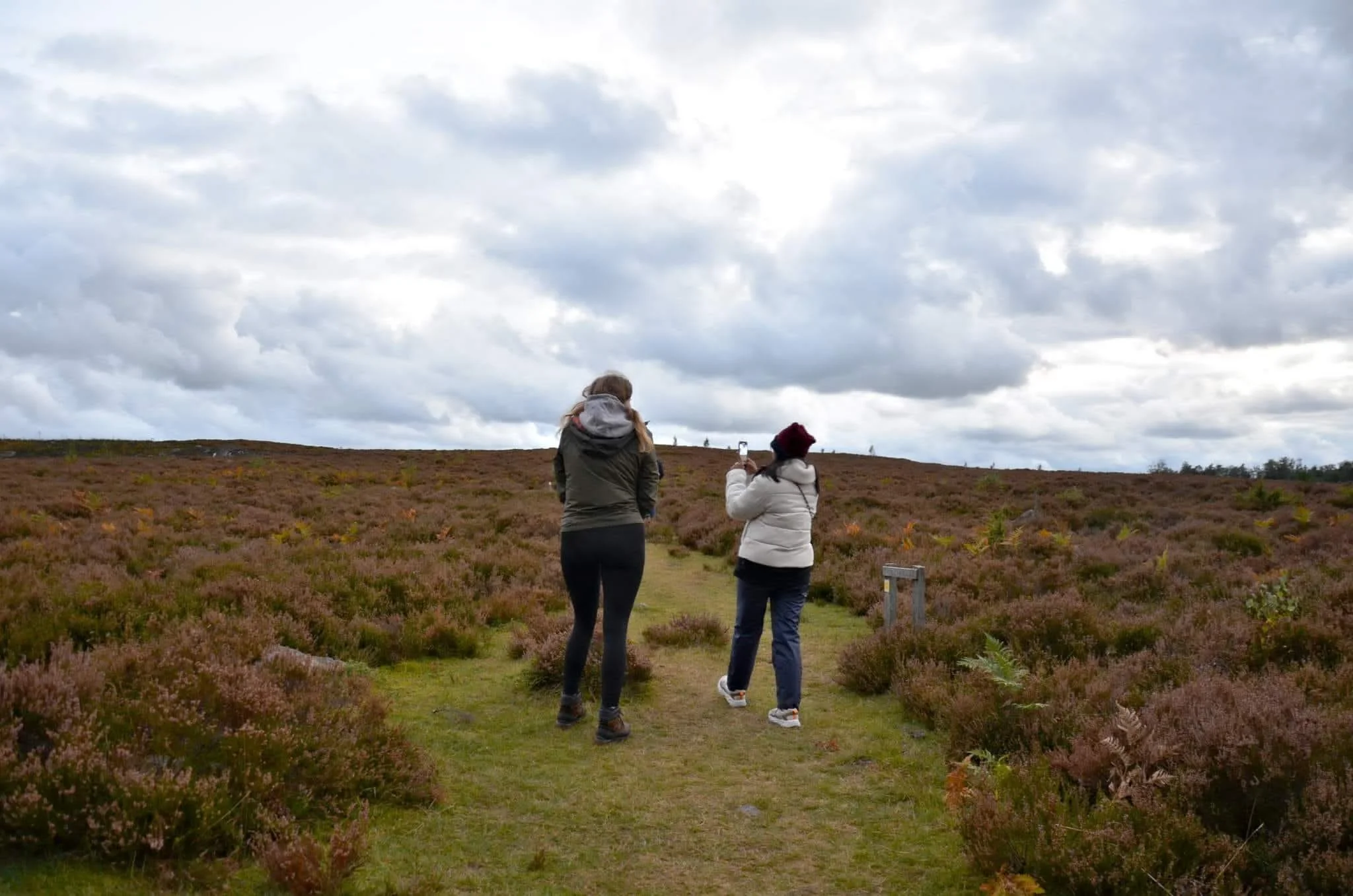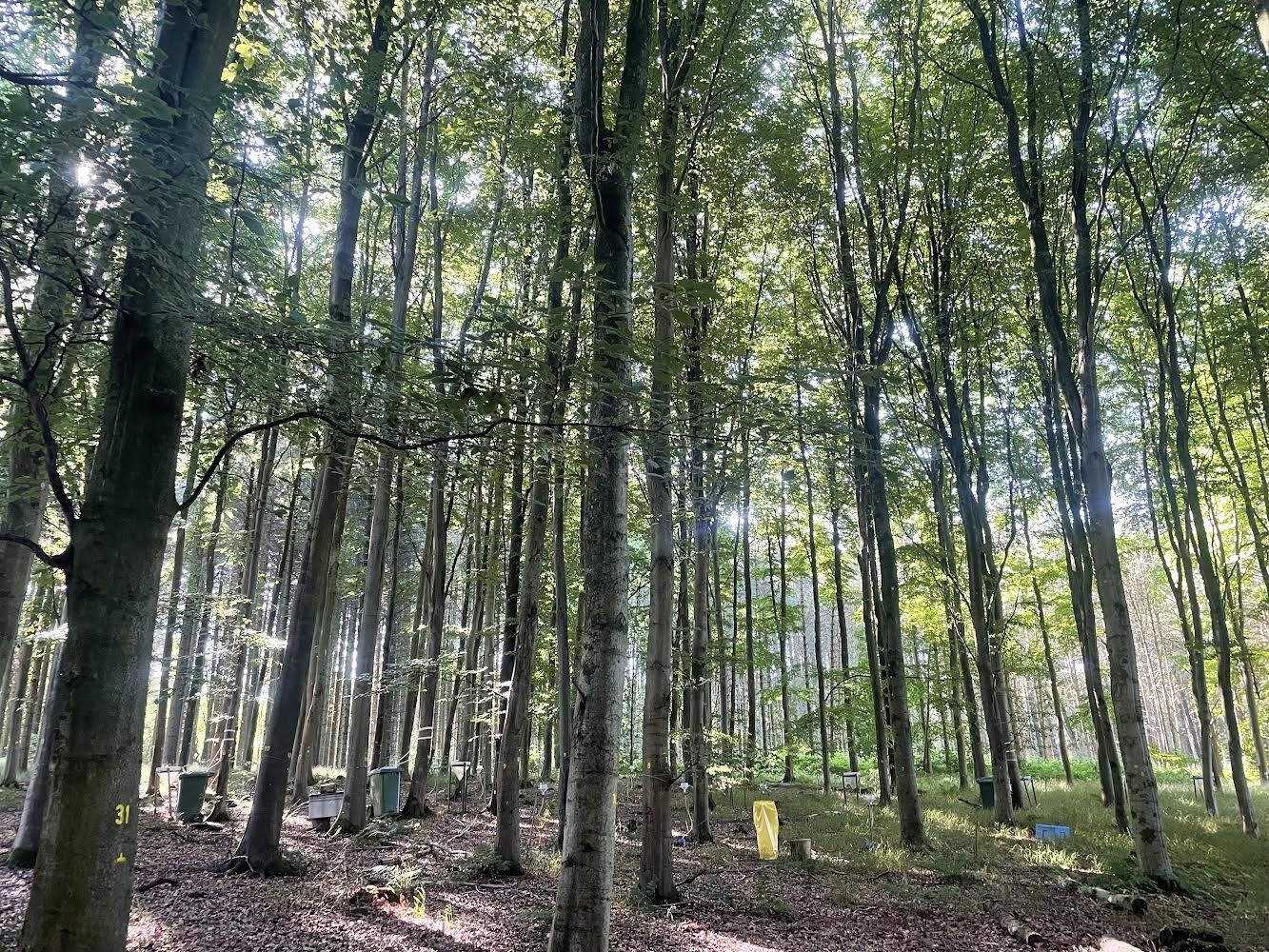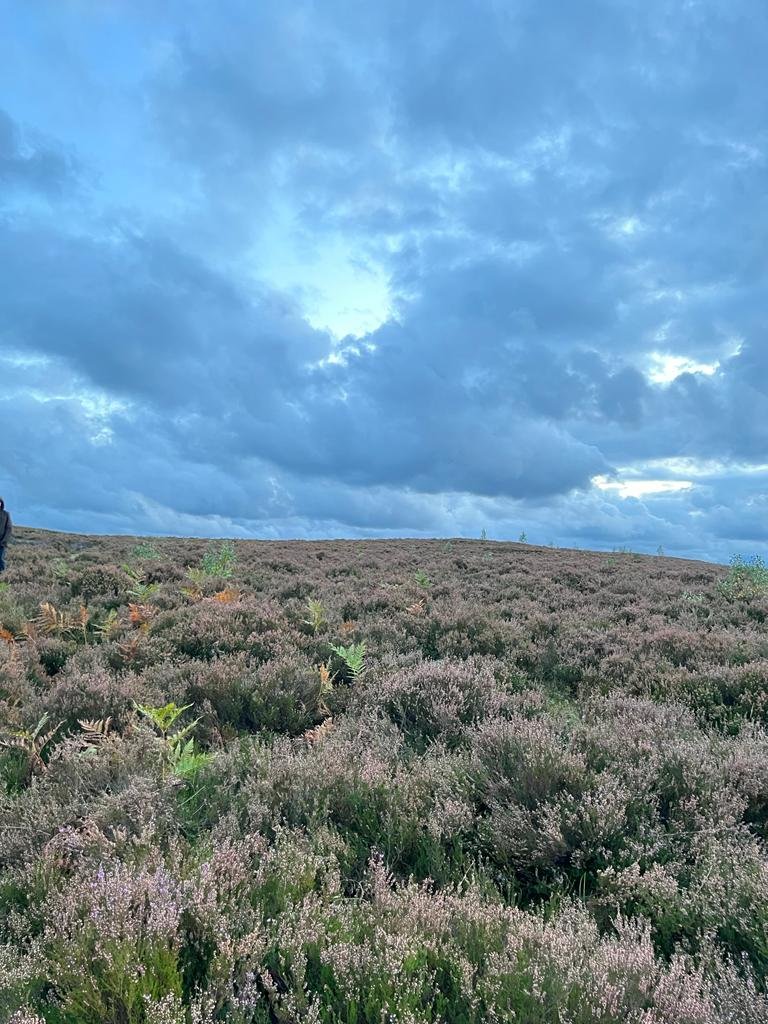Photos & piece by: Mary Motunrayo, Ogunleye
AFFORESTATION
Afforestation projects are often done in grassland ecosystems to sequester carbon, increase forest cover, or even use for REDD+. However, the mode of operation employed sometimes leads to environmental conflicts between the project sponsor and the community. And these impacts affect the three pillars of sustainability.
This blog explores the challenges and opportunities of grassland afforestation projects in Uruguay, encompassing social livelihoods and climate justice. I aim to spur your advocacy commitment towards the integration of grassland ecosystem conservation and its contribution to livelihood.
#Grassland Afforestation
Our planet is a beautiful tapestry of diverse elements coexisting in the same space. From the lush greenery of nature to the bustling social amenities, everything shares the same space. The natural environment has always been the principal occupant of the earth's surface, occurring in its kinds and forms. This interconnectedness brings about culture, identity, and value. Grassland is one of the beauties of nature that spans across all continents except in Antarctica. As an ecosystem, its values are rooted in the connectivity and identity of the people sharing the same space within it. Grasslands are known by different names in different parts of the world. In Africa, they are called savannas or veldts, in South America, they are known as pampas, while in Europe and Asia, grasslands are referred to as steppes. North America identifies it as prairies, while Australia calls it rangelands. These names are influenced by the social identity of each region, reflecting their local languages, cultures, and perceptions of natural grasslands.
Grasslands are home to a rich diversity of plants and animals and provide essential services for human well-being, such as pollination services, stream filtration, and climate stabilization. However, grasslands are also threatened by various factors, such as land degradation, climate change, and conversion to other land uses.
Grassland degradation has been attributed to anthropogenic activities, especially in managing landscapes, management dynamics for grasslands require periodic fires to maximize species diversity. A routine that is germane to grassland proliferation, growth, and reduction of invasive species. However, land use management with an intensive agricultural system and operational expansion have deleterious effects on grassland soil texture, microbes and nutrients. This has led to a reduction in the ecosystem services of grassland and the degradation of unique species endemic to the grassland ecosystem. One of the most controversial and widespread land use changes is grassland afforestation, which involves planting trees on land that was previously covered by grasses and other herbaceous plants.
Grassland afforestation projects have been implemented in many world regions, such as Uruguay, China, and Africa, with different objectives and outcomes. In Uruguay, 8% of 36% of grassland in 2015 was converted into exotic forest plantations and the remaining 28% is used for cropland. Many afforestation projects aim to sequester carbon and mitigate climate change, while others seek to produce timber and generate income. Some projects claim to restore degraded land and conserve biodiversity, while others may cause the loss of grassland ecosystems and their unique functions. The impacts of grassland afforestation projects are complex and context-dependent and often involve trade-offs and uncertainties.
#The challenges
The battle between conservation and conversion is a significant and ongoing issue in grassland ecosystems, as the ecosystem is often taken as free open space or unproductive land. The grassland ecosystem is easy to tilt, and its conservation secures the higher end of biological functions and stabilization. Take Uruguay as a case study. Uruguay is one of the countries in South America endowed with a large expanse of grassland, of which 13.5 million hectares are grassland. This ecosystem supports various livelihood and biological functions. The people of Uruguay benefit from the ecosystem services in various ways, including pollination services, which support their food security and economic growth. Moreover, the aesthetic structure of the grassland landscape enhances certain agricultural practices and recreation such as ranching and grazing. However, the level of social dependency on grassland ecosystems cannot be overlooked, especially when power relation dynamics are not equal. As reported by the Guayubira Group, one of Uruguay's most significant afforestation projects was the one geared towards pulp for cellulose production. At the onset, the initiative to convert the grasslands into monoculture plantations carried the weight of noble intentions. The government spoke of economic development, increased employment opportunities, increased forest cover, and the potential for sustainable practices that would benefit the community and the environment. The allure of change hung in the air, promising a better future for all. Yet, as the dust settled and the new landscape emerged, so did the unforeseen consequences that cast a shadow over the community's livelihoods. The conversion of the natural grassland to a monoculture plantation affected the locals' identity, culture, and value. Some impacts include cultural loss, food insecurity, biodiversity loss, soil contamination, groundwater depletion and pollution, and loss of land rights. The negative impact surpassed any initial gains, leaving the affected residents grappling with challenges that touched every aspect of their lives.
#Biodiversity challenges
Grassland ecosystems are biodiverse and support a wide range of flora and fauna species that are economically important and contribute to food security. However, reports suggest that monoculture afforestation has caused a significant reduction of species diversity in the grassland ecosystem. This has negatively impacted the pollination services that support livelihoods in the region. In particular, the reduction of pollen-rich flowers in the ecosystem has adversely affected honey production, thus hindering food security, contributing to biodiversity loss, and reducing the economic power of bee farmers. In addition, the operational activities and the density of the trees in the plantation also challenge the ecological functioning of the grassland ecosystem to an extent. More evapotranspiration is observed in afforested areas than in grassland and this has a significant impact on water flow thereby impacting the aquatic bodies in the environment. Similar is the use of chemicals such as pesticides or fertilisers on planted trees. The impact of surface runoffs on any adjacent waterbodies negatively impacts the health and reproduction of the aquatic animals in the ecosystem.
#land right challenges
Land rights in Uruguay, like in other settlements, are divided among various stakeholders. Uruguay is renowned for its vast grasslands and agricultural heritage. However, the country underwent a significant change in 1987 when it shifted its focus towards industrial tree plantations. While this pivot brought many benefits, it also presented several challenges, such as difficulties in acquiring land, increased land prices, changes in landscape, and limited access to land due to private ownership. The afforestation projects have had a more severe impact on small farmers who have strong connections to their land and cultural identities. As these projects continue to expand, smaller farmers who are engaged in grazing, ranching, and crop farming are being displaced, which forces them to adapt to changing landscapes. This leads to migration from rural to urban settlements, resulting in a change in livelihoods. Additionally, the choice of trees planted has resulted in water depletion, and with the onset of climate change, the threat to sustainable water is expected to increase. Social seclusion, land displacement, and loss of productive land are major concerns for small-scale land-dependent farmers. Therefore, it is crucial to address the social and environmental consequences that arise from prioritizing economic development.
Remarkably, forested areas poise climate change mitigation strategies around the world. However, grasslands afforestation creates ecosystem trade-offs and opportunity costs of land use and resource allocation. Planting trees on grasslands reduces the water table, changes species composition and nutrients, and exacerbates carbon emissions; research has shown that soil carbon makes up ca. 81% of the total carbon found within grassland ecosystems, and globally, 10-30% of soil carbon is stored in grassland. Hence, the conversion or tilling of such an ecosystem is subject to increased carbon emissions. This also implies that the grassland ecosystem has the potential to sequester carbon as the forest ecosystem could and provide live supporting services that contribute to livelihood.
If grassland ecosystems could capture carbon as such, then afforestation with the goal of carbon sequestration and climate change must be re-evaluated. Most importantly, local community preferences and adaptation styles to climate change should be valued first. Second to its livelihood check is the environmental impact of the afforestation project. Conserving and sustaining endemic biological functions and compositions in the ecosystem is essential.
#The Opportunities
Co-creation, co-sharing, and co-benefits is one of the opportunities that could abound within grassland ecosystem. Land use and land use change are often economically and politically driven. However, with a careful analysis of the goals and objectives of the projects, some objectives might intercept each other. The grassland ecosystem plays a vital role in supporting the socioeconomic well-being of local populations. Additionally, it can have a positive impact on the environment. Similarly, forestry offers opportunities and benefits that can enhance people's livelihoods. Therefore, it is crucial to co-create afforestation projects with local communities. This approach would enable power sharing and land rights, facilitating a mutually beneficial relationship. For instance, the new development of this concept of co-creation and sharing of land rights led to the mutual benefits of the afforestation project in Uruguay. Many social issues such as land hostility, conflict, and loss of production were avoided due to the implementation of the plan. Therefore, the new system enables value sharing between the forestry company and the ranchers.
#To Plant or Not to Plant
As an open space, it is time to give credence to the grassland ecosystem with its potential to preserve natural habitats, support livelihoods, and contribute to climate change mitigation. However, the decision to plant or not to plant trees in grassland is a complex one, fraught with both challenges and opportunities. While afforestation projects can bring about climate mitigation and biodiversity benefits, they must be carefully co-created and implemented with all affected stakeholders to avoid negative environmental impacts, negative social feedback, and loss of economic power, these are what sustainable land use represents. Afforestation projects might be a call to climate action and support for life on land but its effectiveness depends on good governance and equitable benefits distribution. Ultimately, a people-oriented approach that supports the needs of the local people who manage the grassland ecosystem for their livelihood is crucial to the success of any grassland afforestation projects.
“As we envisioned sustainable livelihood and environment, let’s remember that every blade of grass counts, and so does every tree, it is in our hands to co-create, conserve, and sustain the intricate values of these unique ecosystems”
Sources
Cano, D.; Cacciuttolo, C.; Custodio, M.; Nosetto, M. Effects of Grassland Afforestation on Water Yield in Basins of Uruguay: A Spatio-Temporal Analysis of Historical Trends Using Remote Sensing and Field Measurements. Land 2023, 12, 185. https://doi.org/10.3390/land12010185
Dondini, M., Martin, M., De Camillis, C., Uwizeye, A., Soussana, J.-F., Robinson, T., & Steinfeld, H. (2023). Global assessment of soil carbon in grasslands: From current stock estimates to sequestration potential (Vol. 187). Food and Agriculture Organization of the United Nations FAO. https://www.fao.org/3/cc3981en/cc3981en.pdf
Guayubira, Group. "Forests of Eucalyptus Vs. Beekeeping." Guayubira Group. April 10, 2005. http://www.guayubira.org.uy/2005/10/montes-de-eucaliptus-vs-apicultura/.
Guayubira, Group. "Land as a Business or as a Space of Sovereignty." Guayubira Group. September 9, 2010.http://www.guayubira.org.uy/2010/09/la-tierra-como-negocio-o-como-espacio-de-soberania/.
Guayubira. Monocultivos. Accessed on [2024].Plantations (guayubira.org.uy)
Malkamäki, Arttu, Anne Toppinen, and Markku Kanninen. 2016. "Impacts of Land Use and Land Use Changes on the Resilience of Beekeeping in Uruguay." Forest Policy and Economics 70 (September): 113–23. https://doi.org/10.1016/j.forpol.2016.06.002.
Ontl, T.; Janowiak, M. 2017. Grassland and Carbon Management. (June, 2017). U.S. Department of Agriculture, Forest Service, Climate Change Resource Center. https://www.fs.usda.gov/ccrc/topics/grassland-carbon-management
Paruelo, José M. 2012. "Ecosystem Services and Tree Plantations in Uruguay: A Reply to Vihervaara et al. (2012)." Forest Policy and Economics 22 (September): 85–88. https://doi.org/10.1016/j.forpol.2012.04.005.
Plantations in Grasslands: New Generation Plantations. Accessed on [2015]. Plantations in grasslands - New Generation Plantations
Switzer, Michelle B. 2014. "Planting Progress? The Everyday Impacts of Plantation Forestry on Small Farmers in Interior Uruguay." Environmental Justice 7 (3): 77–80. https://doi.org/10.1089/env.2013.0032








